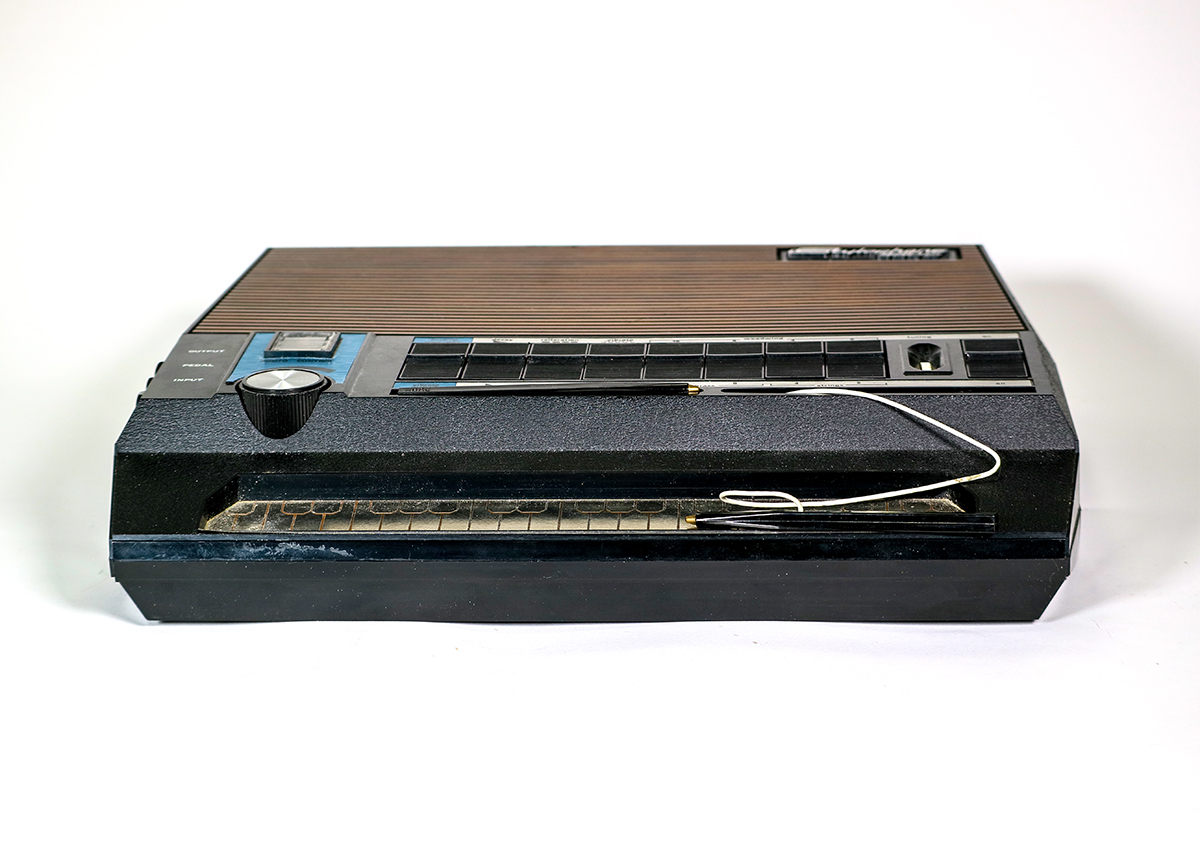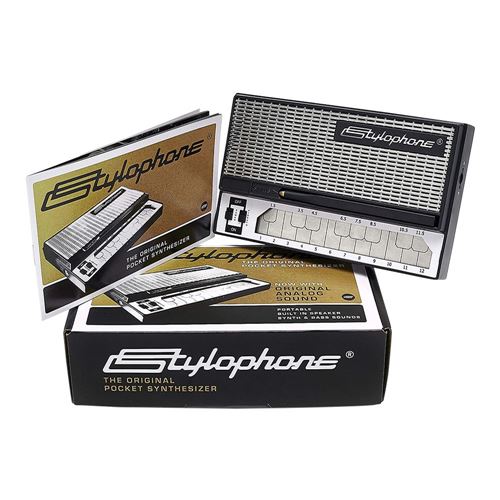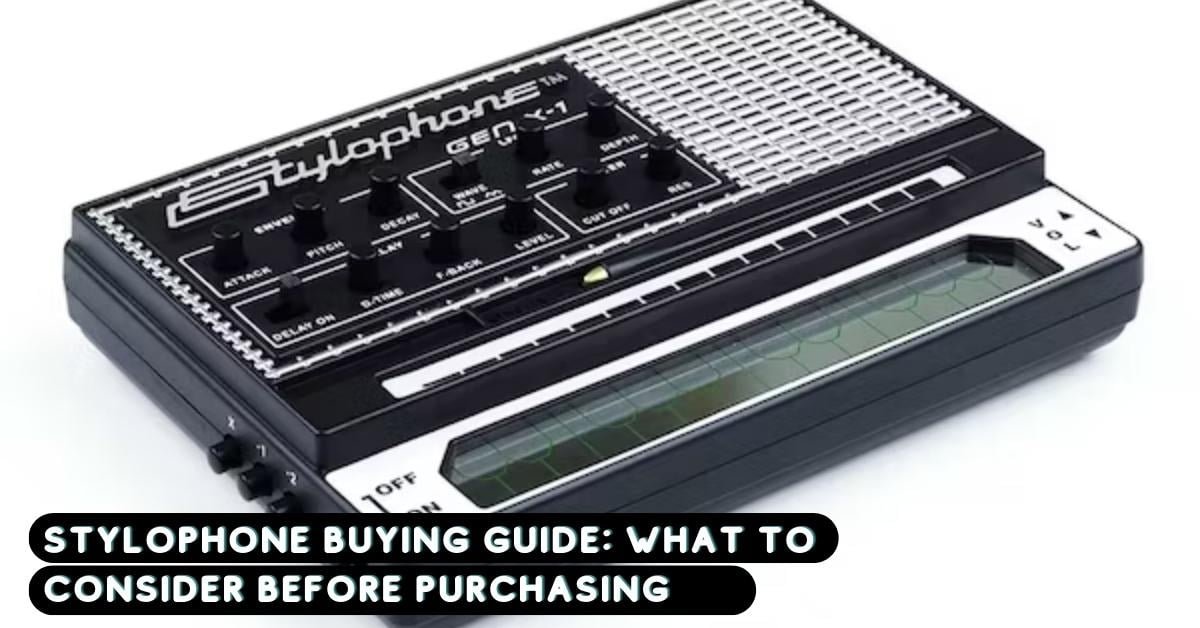Stylophone Buying Guide: When buying a Stylophone, consider the type that suits your needs, features and functions, build quality, price range, and user reviews. These factors will help you make an informed decision and find the perfect Stylophone for your musical aspirations.
Types of Stylophones: Which one suits your needs?
Stylophones come in various types, each with its own unique features and capabilities. Understanding the different types will help you choose the one that best suits your needs. Here are the three main types of Stylophones:
- Classic Stylophone: This is the original model introduced in the 1960s, featuring a small keyboard played with a stylus. It offers a simple and straightforward design, making it suitable for beginners and those looking for a vintage appeal.
- Stylophone S2: The Stylophone S2 is a modern version of the classic model. It offers additional features like built-in effects, MIDI connectivity, and expanded sound options. It is ideal for intermediate to advanced players who want more control and versatility.
- Stylophone GEN X-1: The GEN X-1 is a portable and affordable option. It combines the classic Stylophone design with additional features such as a built-in speaker, delay effect, and an LFO section. It is a great choice for beginners and those on a budget.

Features and Functions: What to look for in a Stylophone?
When purchasing a Stylophone, it’s essential to consider the features and functions it offers. Here are some key aspects to look for:
- Sound options: Check if the Stylophone provides a variety of sound options, such as different waveforms, synth tones, or built-in effects. This will allow you to explore different musical genres and create unique sounds.
- Connectivity: If you plan to integrate the Stylophone with other devices or software, look for models that offer MIDI connectivity or the ability to connect via USB. This will enable you to use the instrument as a MIDI controller or record your compositions digitally.
- Power options: Consider whether the Stylophone operates on batteries or requires an external power source. Battery-powered models offer portability but may require frequent battery changes. Models with an external power source can be more convenient for studio or home use.
Build Quality and Durability: Is it built to last?
When investing in any musical instrument, it’s crucial to assess its build quality and durability. This ensures that your Stylophone will withstand regular use and perform optimally. Pay attention to the following factors:
- Materials: Check the materials used in the construction of the Stylophone. High-quality plastics or metal casings tend to be more durable and resistant to wear and tear.
- Button and keyboard responsiveness: Test the responsiveness of the buttons and keyboard. They should feel sturdy and provide reliable feedback when pressed. Avoid instruments with flimsy or unresponsive keys, as they can hinder your playing experience.
- Overall construction: Inspect the overall construction of the Stylophone, including the assembly and design. Look for signs of solid craftsmanship and attention to detail. A well-built Stylophone will have secure connections, neatly arranged components, and a professional finish.

Price Range: How much should you budget for a Stylophone?
The price range of Stylophones can vary significantly depending on the model and its features. Before making a purchase, it’s essential to determine your budget. Consider the following factors:
- Beginner vs. Professional: If you’re a beginner or purchasing a Stylophone for casual use, you may opt for a more affordable model. Basic versions or entry-level models often provide ample functionality for beginners to learn and experiment with.
- Advanced Features: Advanced models with additional features like MIDI connectivity, built-in effects, and expanded sound options tend to be more expensive. If you require these advanced functionalities or plan to use the Stylophone for professional purposes, you may need to allocate a higher budget.
- Brand and Reputation: Established brands with a reputation for quality craftsmanship and superior sound may come with a higher price tag. Consider the trade-off between brand recognition and your budget.
It’s important to strike a balance between your desired features and your budget. Consider researching and comparing prices from different retailers or online platforms to ensure you’re getting the best value for your money.
User Reviews and Recommendations: What do others say about different models?
One of the most valuable resources when making a purchasing decision is user reviews and recommendations. Hearing from other Stylophone users can provide insights into the instrument’s performance, usability, and overall satisfaction. Here’s how you can benefit from user reviews:
- Online Forums and Communities: Join online forums or communities dedicated to music production or specific Stylophone models. Engage with other users, ask questions, and read their experiences. This will give you a broader perspective and help you make an informed decision.
- Product Reviews: Explore reputable websites and platforms that offer detailed product reviews. Look for feedback on sound quality, durability, ease of use, and any potential drawbacks mentioned by users.
- Video Demonstrations: Watch video demonstrations or tutorials on platforms like YouTube. These videos often showcase the instrument’s sound capabilities and functionality, allowing you to assess its suitability for your musical style and preferences.
By considering user reviews and recommendations, you can gain valuable insights into the strengths and weaknesses of different Stylophone models and make a more informed decision.
Is it hard to play Stylophone?
Playing the Stylophone is generally considered easy and beginner-friendly. Its simple design and intuitive interface make it accessible to musicians of all levels. The instrument features a small keyboard played with a stylus, allowing you to produce notes by touching the keys. The layout is straightforward, making it easy to play melodies and explore different musical ideas. With a little practice and experimentation, you can quickly grasp the basics and begin creating your own unique sounds on the Stylophone.

Can you use headphones with a Stylophone?
Yes, it is possible to use headphones with a Stylophone, depending on the model you choose. Some Stylophone models come equipped with a headphone jack, allowing you to connect your headphones directly to the instrument. This feature is particularly useful for practicing privately or when you want to avoid disturbing others. By using headphones, you can enjoy a more immersive and focused playing experience, fully appreciating the nuances of the Stylophone’s sound without the need for external speakers.
What type of instrument is a Stylophone?
The Stylophone is a unique and distinctive electronic musical instrument. It falls into the category of a monophonic analog synthesizer. The instrument consists of a small keyboard with metal contacts that are played using a stylus or finger. When a contact is touched, an electrical circuit is completed, generating a specific pitch.
The Stylophone was first introduced in the 1960s and gained popularity due to its compact size, portability, and ability to create a wide range of electronic sounds. It has been used in various musical genres, including electronic, pop, and experimental music.
I try Stylophone for the First Time (Tiny Synthesizer)
FAQs
Can I connect a Stylophone to my computer or smartphone?
Yes, many Stylophone models offer connectivity options like USB or audio jack connections, allowing you to connect them to your computer or smartphone.
Are Stylophones suitable for children?
Yes, Stylophones are often recommended for children as they are easy to learn and operate. Some models are specifically designed for kids with simplified features and a durable build.
Do I need any musical knowledge to play a Stylophone?
No, you don’t need any prior musical knowledge to play a Stylophone. It is designed to be accessible and intuitive, making it suitable for beginners.
Conclusion
Choosing the right Stylophone requires careful consideration of various factors, such as sound quality, features, size, durability, price, user experience, and connectivity options. By assessing your specific needs and preferences within these categories, you can find a Stylophone that enhances your musical journey.
Remember to take advantage of online resources, tutorials, and reviews to gain a better understanding of the different models available. With the right Stylophone in your hands, you’ll be ready to create unique and captivating music. Happy shopping and happy playing!


